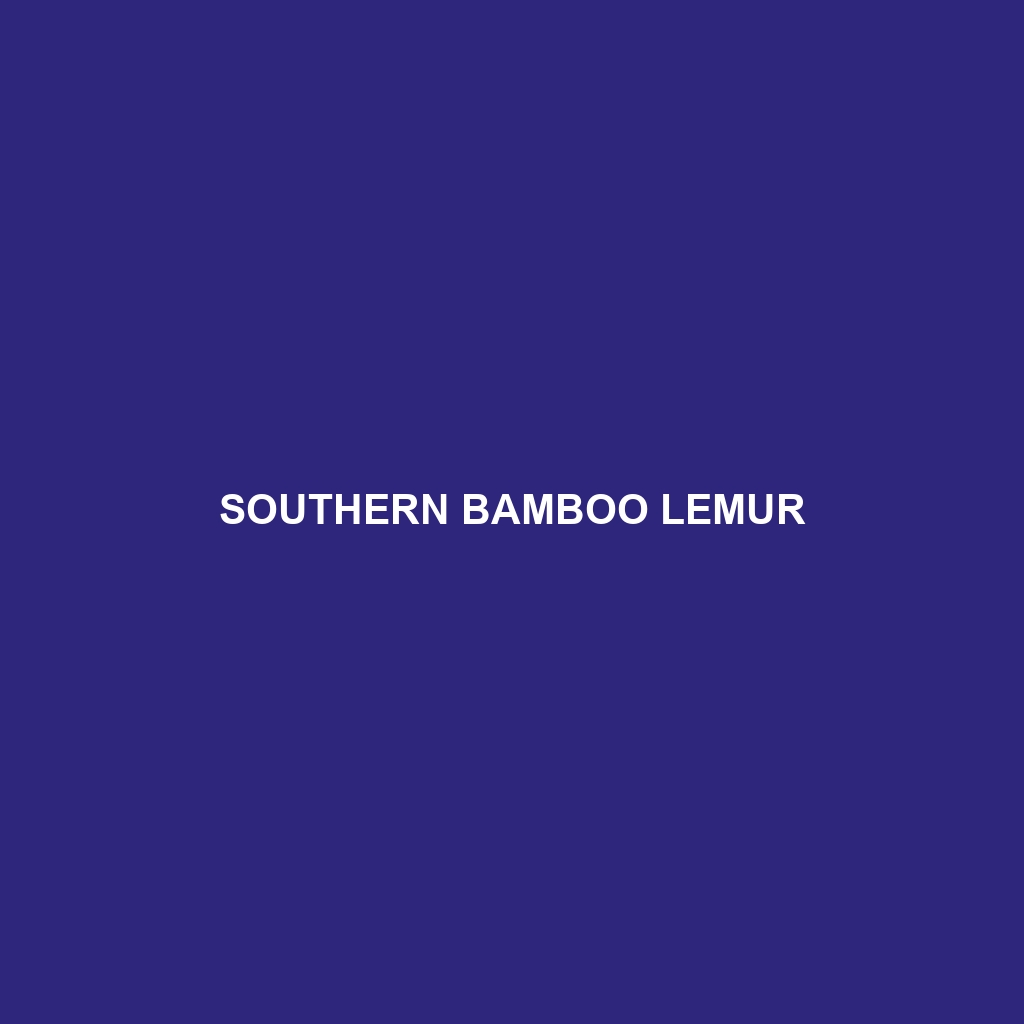Southern Bamboo Lemur (Scientific Name: Hapalemur meridionalis)
Common Name: Southern Bamboo Lemur
Scientific Name: Hapalemur meridionalis
Habitat
The Southern Bamboo Lemur is primarily found in the dense rainforests of southern Madagascar. This unique primate prefers humid, lowland tropical forests with abundant bamboo and dense vegetation, which provides both shelter and a rich source of food.
Physical Characteristics
Southern Bamboo Lemurs are medium-sized lemurs, typically measuring between 50 to 60 centimeters (20 to 24 inches) in length, including their long tails. They have a distinctive coat that ranges from light gray to dark brown, characterized by a lighter underbelly. One prominent feature is their rounded ears and large, expressive eyes, adapted for their nocturnal lifestyle.
Behavior
This species exhibits fascinating social behaviors, often living in small groups of up to 10 individuals. The Southern Bamboo Lemur is predominantly active at night (nocturnal) and spends much of its time foraging for food. They are known for their agility and are excellent climbers, which helps them navigate their arboreal habitat. Communication among group members is achieved through a variety of vocalizations and body language.
Diet
The diet of the Southern Bamboo Lemur primarily consists of bamboo shoots and leaves, which are highly fibrous and nutrient-rich. They are also known to consume fruits and flowers when available, showcasing their adaptability to seasonal changes in food resources. Their specialized digestive systems enable them to extract maximum nutrients from bamboo, which is a staple part of their feeding habits.
Reproduction
Southern Bamboo Lemurs have a distinct breeding season, typically occurring between September and November. Females usually give birth to a single offspring after a gestation period of about 120 days. The young are cared for by both parents and older siblings, promoting strong familial bonds among the group. Notably, the juvenile lemurs are weaned around four to five months of age.
Conservation Status
The Southern Bamboo Lemur is currently listed as endangered by the IUCN Red List. Habitat destruction due to deforestation, agricultural expansion, and human encroachment poses significant threats to their survival. Conservation efforts are essential to protect their natural habitat and promote awareness of their ecological importance.
Interesting Facts
Did you know that the Southern Bamboo Lemur is crucial for the dispersal of bamboo seeds? Their feeding habits contribute to the growth and regeneration of bamboo forests, which are vital for their own habitat and other species as well. Additionally, they exhibit a fascinating behavior called “bamboo-bending,” where they use their teeth to manipulate bamboo for access to younger shoots.
Role in Ecosystem
As a herbivore, the Southern Bamboo Lemur plays an essential role in its ecosystem by aiding in the growth of bamboo forests. Their foraging contributes to seed dispersal, which helps maintain plant diversity. Additionally, they serve as prey for larger predators, thus maintaining the balance within the food web of the rainforest.
